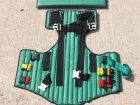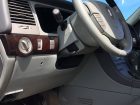
Extrication tips: Best practices for patient care
Chad Roberts
Features Extrication Training annex firefighter trainingThis column is the first in a two-part series about dealing with patients involved in motor-vehicle collisions (MVCs). The next column, in January, will address research that has led to changes to how crews respond to patients at extrication incidents,.
The status of the patient dictates how rescuers will plan the removal, from pacing to overall approach.
Once rescuers have made contact with the patient, while ensuring the patient keeps his or her head facing straight forward, the crew can decide the best plan for removal. Rescuers may have to enter the vehicle to get better access to the patient, or it may be best to remain outside, depending on vehicle placement and stability. If rescuers commit themselves, or any other crew member, to enter the vehicle, ensure the vehicle is stabilized properly to avoid any unwanted movement to the patient, while maintaining patient/ first responder safety.
After access, have a quick look around the vehicle before committing to spinal immobilization (C-spine). Check whether the car is still running: if so, remove the keys from the ignition; for newer vehicles with fobs, remove and keep nine metres (30 feet) away from the vehicle, and apply the parking brake. Look for any entrapments or major gross bleeds. Check for any hazards that may make the interior of the vehicle a dangerous place for rescuers or and the patient (broken glass, protruding metal, weapons.)
Once these checks have been completed, go ahead and hold the patient C-spine, continuing with patient assessment. If another firefighter or medic is available, have that person maintain C-spine, while the rescuer completes a full assessment. Assess the ABCs. Ensure the patient has a clear airway and an adequate breathing rate (12 to 20 breaths per minute). Keep in mind that laboured respirations and irregular rates can indicate an underlying injury or worsening patient conditions, so identify and address breathing issues immediately. If needed, provide high-flow oxygen via a non-rebreather or bag valve mask.
Ensure the patient has a strong pulse rate (60 to 100 beats per minute), with a consistent rhythm. A weak or irregular pulse can signal a major bleed or other conditions such as shock. Assessing the ABCs right away ensures that rescuers can quickly let the incident commander know whether a technical extrication can be completed, or if the patient requires rapid removal.
Rescuers should ask patients pertinent questions, such as whether they remember the accident. Did the patient hit his or her head? Can the patient remember what day of the week it is or where he or she was going? Have the secondary medic continue with a thorough full-body assessment. Check the neck and back by palpation, listening to the patient to gauge any areas of discomfort or possible injury. Continue checking the upper torso, feeling for any underlying pain or areas of stiffness that could indicate internal bleeds or injuries. Check the pelvis to ensure no injuries to the hips. Major bleeds can pool into the pelvic cavity, causing pain to the patient upon extrication. Lastly, check all the patient’s limbs for adequate pulse, motor movement and sensory capability. Ensure that the left and right sides of the body feels consistent throughout the assessment; inconsistencies could indicate injury or early signs of shock.
Once this thorough assessment is complete, be sure to check blood pressure and recheck the patient’s ABCs. Continue to check vitals every five minutes to monitor changes to the patient’s condition. A loss of pulse or a rise and subsequent fall of blood pressure can be a sign of shock, or an indication that the patient is crashing. Remain in contact with the incident commander, noting any changes to patient conditions.
After these assessments, rescuers need to quickly treat the patient, determine the overall condition, and consider removal options. The best place for a patient with severe or life-threatening injuries is out of the vehicle and into an emergency room. Extrication plans must be greatly expedited or abandoned if a patient’s life is in danger.
The use of a secondary firefighter or paramedic is extremely helpful when freeing up any entrapments or when applying the Kendrick Extrication Device (KED) to the patient for packaging before removal. This second set of hands can help create valuable space by activating seat backs, removing headrests, and adjusting the steering wheel to aid in the removal process. Once rescuers have made access, controlled the C-spine, completed a primary survey and gross bleed check, freed any entrapments, completed a secondary survey, and created space, they can then start packaging the patient (using a KED) for removal.
The point of auto extrication is to create space around the patient. By completing the previous steps with the use of a two-rescuer system, rescuers give the patient the best chance for survival and recovery.
The last step is the physical removal of the patient from the vehicle. There are many different approaches to patient assessment and removal. Research and studies that discuss changes to how crews approach patient care and removal will be addressed in the January issue.
Until then, be smart and never stop watching, reading and listening.
Chad Roberts is a firefighter in Oakville, Ont., and works on a heavy rescue. He is a member of the Oakville extrication team and competes and trains across North America. chadroberts12@gmail.com
Print this page
Advertisement
- No lights, no sirens: Autism awareness changes incident response
- Back to basics: Making a mayday call, part 2


